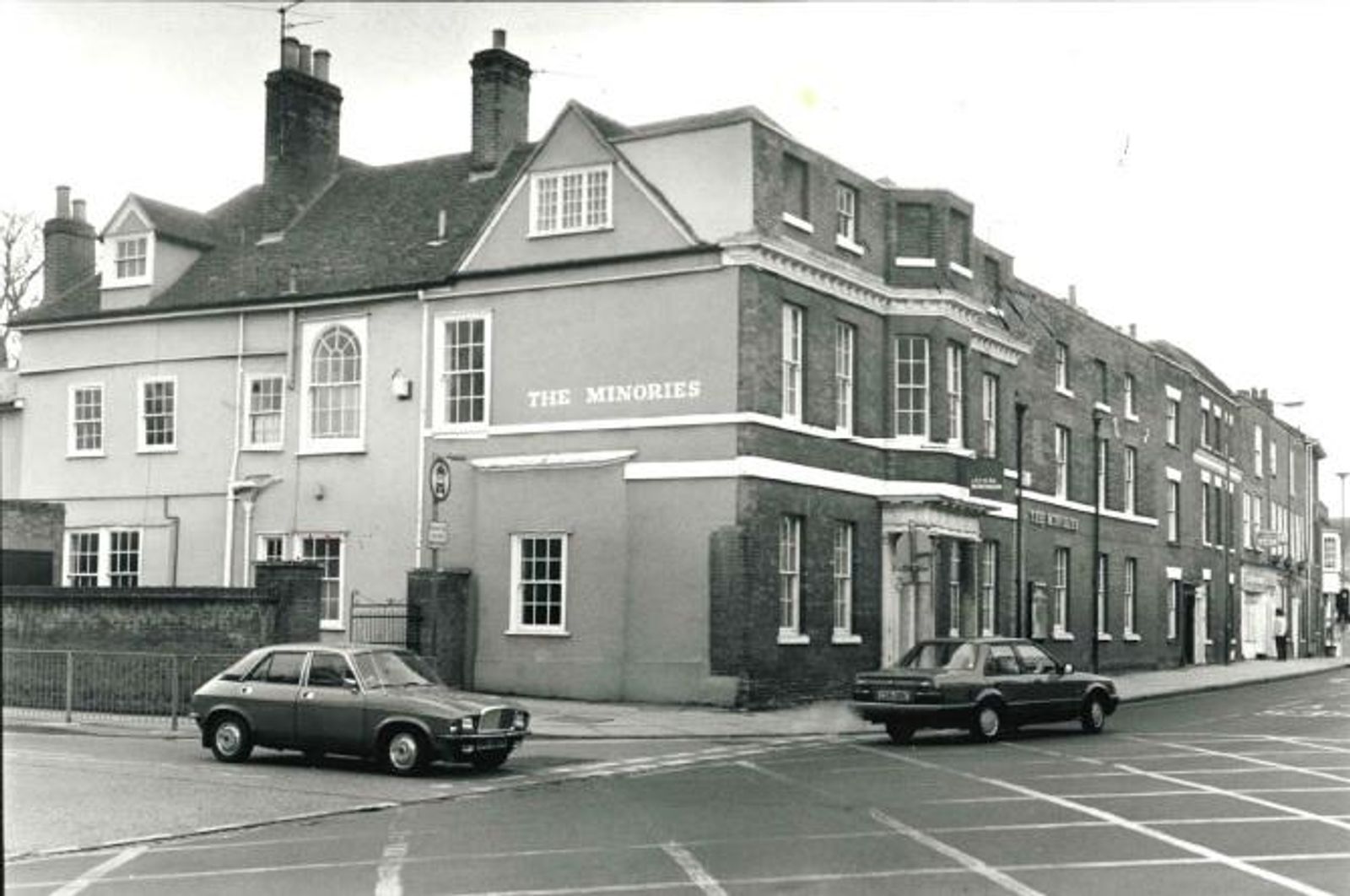‘For the benefit and advantage of the inhabitants of Colchester’

The building
The building now known as the Minories was acquired in 1731 by Isaac Boggis with wealth from the woollen bays or baize making trade. The Tudor mansion was remodelled as an elegant Georgian residence for his son, Thomas Boggis, in 1776. It started to be called “The Minories” in the 1870s, when it became fashionable to give buildings names. From 1884 to 1902 the house was leased by Dr Charles Otto Gustavus Becker, father of the artist Harry Becker who was raised in the Minories. In 1915 Geoffrey Crawford Bensusan-Butt and his wife, Dr Ruth, took the lease, and in 1923 they purchased the property from the Boggis-Rolfe family. Ruth was sister-in-law to Lucien Pisssarro, son of Camille, and the Pissarro family visited regularly. She was a GP, a founder member of the Socialist medical Association and for 35 years a Borough Councillor and Alderman. After her retirement she sold the Minories to the Victor Batte-Lay Trust (which later became the Foundation) in 1956. Since then the building has been run as a Gallery directly by the Victor Batte-Lay Foundation, and has also hosted tenants including Firstsite and Colchester Institute.
‘For the benefit and advantage of the inhabitants of Colchester’

Victor Batte Lay
Clarence Victor Batte-Lay (1865-1935) was a Colchester man who had done well in the brewing business in Norfolk, and retired to Colchester where he built a collection of art and artefacts. His widow, Mrs Margaret Eleanor Batte-Lay, died in 1955 and left the collection and a sum of money to purchase ‘an ancient building of antiquarian or archaeological interest’ to house the collection, in memory of her husband, and ‘for the benefit and advantage of the inhabitants of Colchester’.
“…The exhibitions held by the Trust from 1958 to 1993… numbered some four hundred. [This] represents an artistic achievement of which any gallery could be justifiably proud. Constable, Becker, Bawden, Nash, Bratby, Manet and contemporary artists such as John Doubleday, Anthony Atkinson, Guy Taplin, nine names chosen at random from this eclectic list, indicate the range and quality of the shows. The exhibitions included regular shows by the Colchester Art Society and Colchester School of Art and Design. And embraced sculpture, ceramics and textiles as well as paintings and prints.” (John Woods and Clifford Welch, Celebration of 50 Years of the Victor Batte Lay Trust, 2005)
The twenty first century
Firstsite occupied the Minories and ran a vibrant gallery and art centre throughout the 1990s and until 2009 when it moved into its new building next door. Then Colchester Institute took the lease and used the Minories to accommodate its postgraduate MA course in fine art. With the arrival of the Covid19 pandemic lockdown, the Institute closed the building and announced it would not reopen during the remainder of its lease.
At this announcement, the Victor Batte-Lay Foundation decided the time had come to take back control of the Minories and, working with artists, arts organisations, community groups, public bodies, and the people of Colchester and North Essex, to reimagine the Minories as an arts centre for the post-Covid twentyfirst century. We have created a subsidiary body, We are the Minories, to carry out this work. With the support of Arts Council England and funding from the Cultural Regeneration Fund, we have committed ourselves to start our programmes this year.